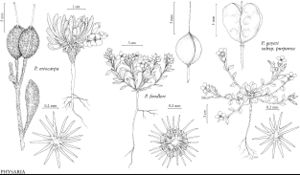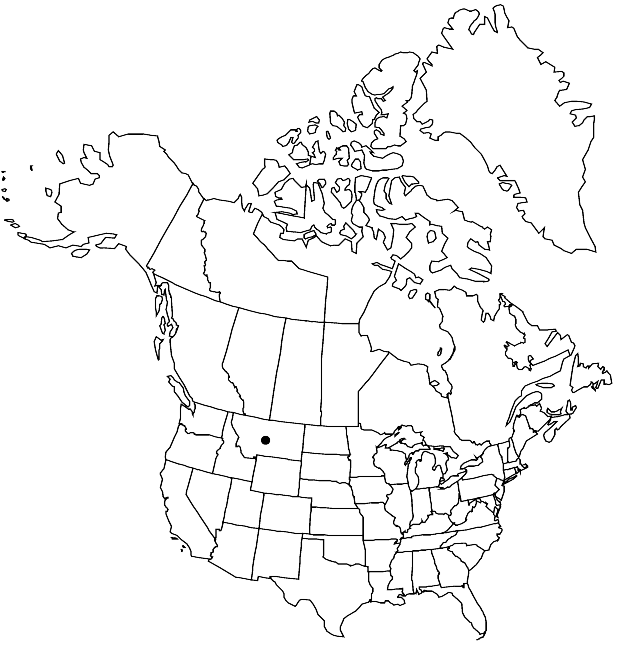Difference between revisions of "Physaria eriocarpa"
Novon 17: 184, fig. 3. 2007.
FNA>Volume Importer |
FNA>Volume Importer |
||
| Line 49: | Line 49: | ||
|publication year=2007 | |publication year=2007 | ||
|special status= | |special status= | ||
| − | |source xml=https://jpend@bitbucket.org/aafc-mbb/fna-data-curation.git/src/ | + | |source xml=https://jpend@bitbucket.org/aafc-mbb/fna-data-curation.git/src/f6b125a955440c0872999024f038d74684f65921/coarse_grained_fna_xml/V7/V7_1049.xml |
|tribe=Brassicaceae tribe Physarieae | |tribe=Brassicaceae tribe Physarieae | ||
|genus=Physaria | |genus=Physaria | ||
Revision as of 20:19, 24 September 2019
Perennials; caudex branched, (thickened, cespitose); densely pubescent, trichomes 5- or 6-rayed, rays slightly fused at base, furcate or bifurcate, (tuberculate throughout). Stems few from base, well-exserted from basal leaves, 0.4–1(–1.2) dm. Basal leaves: blade (erect), obovate to orbicular, 1.5–2.5 cm, (base evidently distinct from petiole), margins entire, (folded). Cauline leaves: blade spatulate, margins entire. Racemes compact, subumbellate. Fruiting pedicels (ascending, curved to slightly sigmoid), 5–8 mm. Flowers: sepals (pale yellow), 4–5 mm; petals lingulate, 6–7 mm. Fruits ovoid to ellipsoid, slightly inflated, (apex not compressed), 3–4 mm; valves pubescent, trichomes erect on mature fruits, (± appearing fuzzy); ovules 8 per ovary; style 4–5 mm, (glabrous). Seeds plump.
Phenology: Flowering Jun–Jul.
Habitat: Windswept ridge lines and mountain peaks in limestone rubble and cobbles
Elevation: 2600-3000 m
Discussion
Of conservation concern.
Physaria eriocarpa is known from Sheep Mountain.
Selected References
None.

